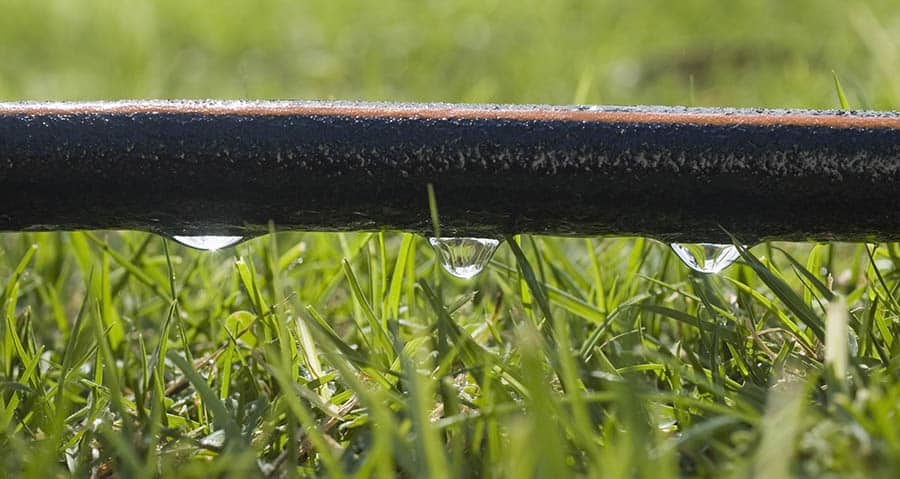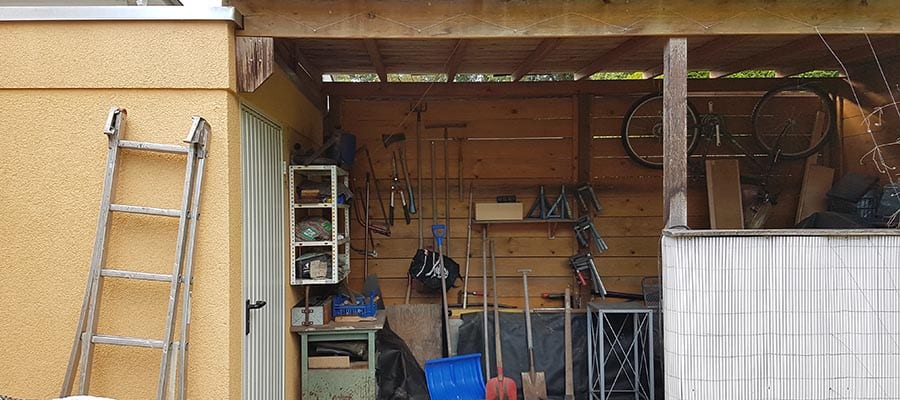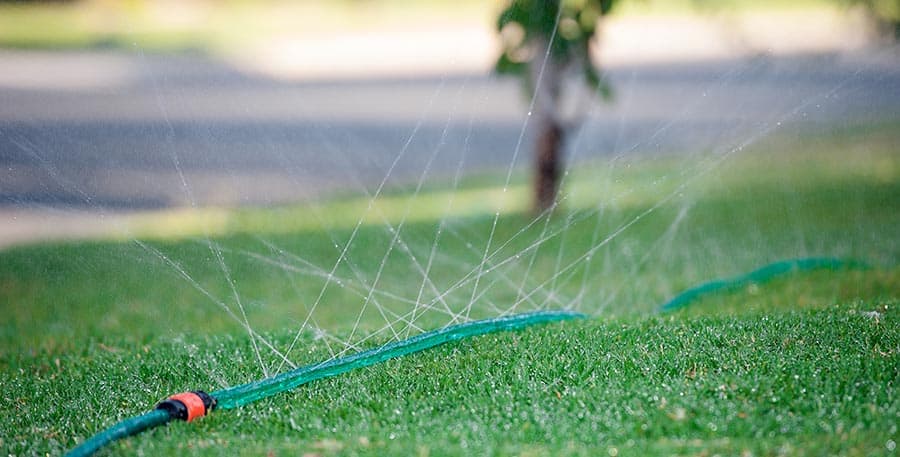Avid gardeners and landscapers often use and recommend soaker hoses as a helpful and convenient solution to more complex watering needs. But how long do soaker hoses last? Is there a way to prolong their working life to reduce replacement costs and landfill usage?
We are going to explore and answer these questions in this article below.
Soaker hoses have a varied length of time that they can be used, depending on the intensity of use and the kind of service. However, the average length of time that a soaker hose lasts is two years. It is possible to extend the shelf life of soaker hoses by storing them inside when not in use and limiting their exposure to weather extremes and direct sunlight that will degrade the rubber.
Soaker hoses are a popular and environmentally safe way for gardeners to water landscaped areas. They are environmentally safe for several reasons.
First, they are made with reconstituted rubber, keeping used rubber products out of the landfill.
Secondly, they are a low flow way to water your plants outside, reducing your water usage slowly.
Finally, soaker hoses prevent water evaporation on hot days while watering, since the water is dripping out of the hose directly into the soil.

How Long Do Soaker Hoses Last?
Soaker hoses generally last anywhere from one to two years, depending on the frequency of use, how often exposure to direct sunlight occurs, and how they are stored when not in service.
A soaker hose user can tell when the hose is no longer a useful watering tool when little fountains of water start appearing from the hose instead of the usual slow dripping of water. Issues are also present when water pressure in the hose is lower than expected.
How To Extend A Soaker Hose Lifespan?
The best way to extend a soaker hose’s lifespan is to store the hose inside a shed or garage when not in use. Soaker hoses come from reconstituted rubber, and they can degrade when exposed to an excess of direct sunlight. Being stored inside also reduces the impact of extreme weather conditions on your soaker hose.
Hot weather can cause the hose rubber to degrade from the high temperatures. And frigid weather can cause any remaining water in the hose to freeze, possibly causing cracks in the hose.
It’s essential to winterize your entire soaker hose system before colder weather arrives. Ensure that you bring them into a shed or garage if you usually do leave your hoses in the yard. Ensure that all of the hardware is removed and that all remaining water drains from the hoses. If you have the tools available to you, use air pressure to blow any water remnants from the hoses before storing them.

Finally, some users bury their soaker hoses under dirt or mulch in their garden areas needing watering. Burying the hoses can prevent any potential vandalism from occurring to the watering system. Furthermore, having the hoses covered can also wholly minimize water evaporation when the water turns on in the system. Finally, covering the soaker hoses prevent excessive sunlight exposure that can be detrimental to the recycled rubber hose.
While burying the hoses can help prevent these issues, this can also be troublesome and limit the soaker’s life. A buried hose can be damaged due to the higher chance of being accidentally torn by digging or weather conditions causing the hose to degrade. Also, a buried soaker hose is almost impossible to monitor the hose’s condition. If you prefer to cover your soaker hoses, it is best to do it with a light coating of mulch instead of burying them in heavier soil.
If you like to know why you should only bury a soaker hose under mulch (if at all!) Check out this article I wrote recently.
Can You Repair A Soaker Hose?

It’s not uncommon for soaker hoses to develop holes or splits in the material that sprays water instead of dripping it slowly. Often, this happens because the water pressure of your system is too high. It’s possible to repair the hose, but ensure that you also check your system’s water pressure, or the holes and splits will continue occurring. You can also choose to add a pressure regulator to your watering system to prevent further issues.
When a hole or a split damages your soaker hose, you can cut out the damaged portion and then reconnect the two ends with a compression coupling.
Alternately, if the hole is the right size, you can try to plug it with a simple ¼ inch goof plug available from most hardware stores.
If they are damaged beyond repair, check out this soaker hose on Amazon.
Do Soaker Hoses Get Clogged?
Soaker hoses can indeed become clogged. You will notice a potential clog if your soaker hose is watering unevenly or dripping less water than usual. Clogs can often happen if you are using well water or pond or lake water as your garden’s water source.
Sand, dirt, and minerals like calcium will begin to build up in the soaker hose system. If you are indeed using one of these water sources, clogs are typically preventable using a filtered water system for your soaker hoses.
It’s also possible to struggle with clogged soaker hoses when using tap water to irrigate your garden. It can happen if your water is incredibly hard with minerals like calcium.
If you have hard water, make sure to use a water softener before running your tap water through your soaker hoses to prevent clogs from forming.
How Do You Clean A Clogged Soaker Hose?
If you suspect that you have a soaker hose clog, you can try to perform a pressure purge to the hose. To do a pressure purge, first, remove all flow or pressure devices. Second, turn on your water source at the highest level for one minute with the hose connected. Turn the water off for one minute. Repeat this process three times.
Once this three-time cycle is complete, take the end cap off your soaker hose and let the water run right through it for about three minutes.
If there is a specific area of the soaker hose blocked with buildup, you can also squeeze and massage that area while running water through the hose during the final rinse. Once all of these steps are complete, if repaired, reinstall all of the hardware and use the soaker hose in the usual fashion.
How Do You Fix A Flat Soaker Hose?
Flat soaker hoses are an interesting variation on the average (round) soaker hose (check them out here on Amazon). The flat soaker hoses are different in two ways. They lie flat on the ground where installed, so there is no risk of them rolling away from the area that you want watered to another location.
Flat soaker hoses also only have holes in one side of the hose, so that you can ensure that only the specific area under the hose receives the water running in the system. It also reduces the risk of water evaporation, as there is no water emerging from the top side of the hose facing the sun.
It’s not advisable to bury the flat soaker hose under the soil, as the pressure can prevent the water from running through the soaker hose. However, the flat soaker hose can have some light mulch placed on top of it with no ill effect.
If your flat soaker hose springs a link, don’t despair! It is possible to fix a flat soaker hose. The first step is to run water through the hose and mark where the leak, tear, or hole is. Then turn the water off, and take off the closest coupler on the hose.
Ideally, the needed repair location is relatively close to the hose area where the coupler attaches. Then, cut off the hose’s leaking area and reattach the coupler to the new end created. Now, with the defective portion of your flat soaker hose removed, it should function correctly.
Conclusion
Soaker hoses are an asset in any gardener’s arsenal of irrigation tools. They are versatile and can be used in various gardens to water a broad blend of plants. It’s essential to care for your soaker hoses conscientiously so that they can last over multiple seasons and offer the kind of irrigation that you expect.
Without careful use, soaker hoses can develop clogs, holes, and tears. These issues can occur due to exposure to weather elements, careless storage, and water supply issues. While it’s not uncommon to deal with leaks and clogs, it is possible to clean out and repair your soaker hoses to continue to function.
Thankfully, there are repair methods available for both flat and round soaker hoses. Both of these types of irrigation tools are easily repaired so that replacement isn’t necessary.

